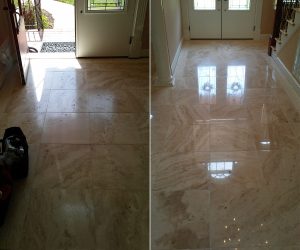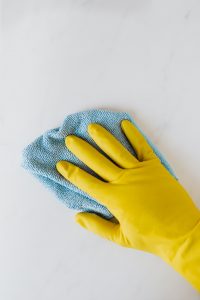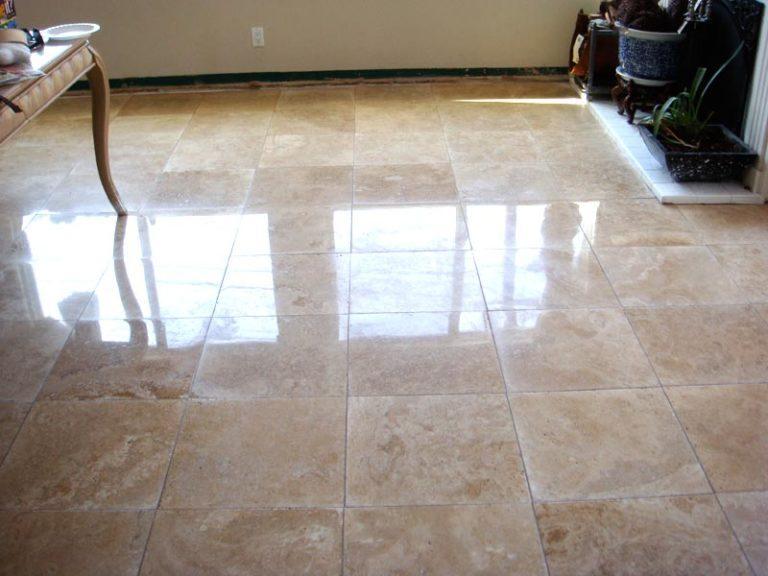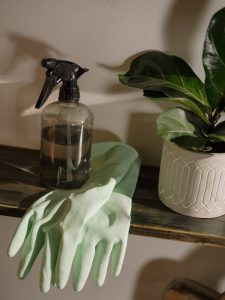Are your tile floors looking a bit dull and dingy? Do you need to learn the best way to clean tile and grout? Whether you have ceramic, porcelain, or stone tiles, cleaning them can be a daunting task. But don’t worry – we’ve got all the answers you need! In this article, we’ll discuss the best way to clean tile and grout without all the hassle.
First things first: it’s important to assess what type of tiles you’re dealing with. Different types of tiles require different cleaning methods. Once you know what kind of tiles you have, you can determine which cleaning products are appropriate and effective. Some cleaners may even work better on certain types of tiles than others!
No matter what kind of tiles you have, there are certain steps that everyone should take when they’re cleaning their tile and grout. We’ll cover these steps in detail so that anyone can achieve sparkling clean tile and grout in no time. Keep reading to learn more about the best way to clean tile and grout!

Overview Of Cleaning Tile & Grout
Tile and grout are two of the most common materials used in kitchens, bathrooms, and other areas of homes. They can be difficult to clean due to their porous nature.
The first step in cleaning tile and grout is to vacuum or sweep the surface in order to remove any large debris. This will help ensure that any deep-set dirt is easier to remove when you start scrubbing. Next, mix a solution with warm water and a mild detergent or specialized cleaner specifically made for tile and grout. Use a brush or scrubber to work the solution into the surface, paying special attention to stains or hard-to-reach areas. Once finished, rinse the area with fresh water for a thorough clean.
For tougher stains such as mold or mildew, use an antibacterial cleaner that contains bleach or ammonia. Make sure you wear protective gear like gloves and masks when using these types of chemicals. If all else fails, steam cleaning is an excellent option for getting your tiles back in shape. It uses hot steam pressure to loosen dirt particles from deep within pores of the material, leaving them looking like new again!
Types Of Tiles & Grout
Tile and grout come in many different types, depending on the material they are made of. Ceramic and porcelain tiles are the most common, being available in a variety of shapes, sizes, and colors. Natural stone is also an option for tile and grout, with granite being one of the most popular choices due to its durability. Glass tiles can be used as an accent or focal point to add a touch of elegance to any space.
When it comes to cleaning tile and grout, it’s important to recognize which type you have. Ceramic and porcelain tiles are usually best cleaned using a mild detergent mixed with water. Natural stone will require a cleaner designed specifically for that type of tile. Glass tiles often need to be wiped clean with just warm water and a soft cloth.
Grout should always be sealed after it has been installed since this will help protect it from dirt and stains. Depending on the type of sealer used, some may need to be reapplied every few years while others will last much longer before needing another application. Regular cleaning is also important; use either a store-bought cleaner or make your own mixture of baking soda, white vinegar, and water to remove any dirt or build up on the grout lines.
Essential Supplies & Materials Needed
 Now that you know the different types of tiles and grout, it’s time to gather the essential supplies and materials needed to clean them. To do a proper job, you’ll need an abrasive scrub brush with stiff bristles, a mild cleaning solution such as dish soap or vinegar, a sponge, and paper towels. You may also want to invest in a steam cleaner if your tile is particularly dirty or stained.
Now that you know the different types of tiles and grout, it’s time to gather the essential supplies and materials needed to clean them. To do a proper job, you’ll need an abrasive scrub brush with stiff bristles, a mild cleaning solution such as dish soap or vinegar, a sponge, and paper towels. You may also want to invest in a steam cleaner if your tile is particularly dirty or stained.
When it comes to cleaning solutions, dish soap or vinegar are usually the best choices. Both are gentle enough for most surfaces but still powerful enough to remove dirt and grime. If you opt for vinegar, combine it with warm water in equal parts for best results. To avoid damaging the tile surface, be sure not to use anything too harsh or abrasive such as bleach and scouring powder.
Once all your supplies are gathered together, start by sweeping any loose debris from the area before wiping down with a damp cloth. Then apply your chosen cleaning solution generously over the entire surface then begin scrubbing with your brush in small circles until all dirt is removed from both tiles and grout lines. Rinse off with warm water when finished then dry thoroughly with paper towels before admiring your sparkling clean tile!
Handwashing Technique
Handwashing is one of the most effective ways to clean tile and grout. Here are some tips and tricks for getting the job done right:
1) Gather your supplies: a non-abrasive cleaning solution, a soft-bristled brush and a damp sponge or cloth.
2) Mix the cleaning solution with warm water in a bucket according to package directions.
3) Dip the brush into the solution and scrub vigorously along the grout lines in a circular motion. Then wipe away any residue with the sponge or cloth.
Handwashing can be time consuming, but it’s worth it for sparkling clean tile and grout! Make sure to rinse all surfaces thoroughly after washing and allow them to air dry completely before use.
Machine-Assisted Cleaning
Machine-assisted cleaning is a great way to clean tile and grout. This method involves using a steam cleaner or pressure washer to remove dirt and debris. Steam cleaners use high-temperature steam to break down and dissolve dirt, while pressure washers use high-pressure water jets to blast away dirt and grime. Both methods are effective at removing stubborn stains and buildup from the surfaces of your tiles and grout.
When using either method, make sure that you follow instructions carefully. Always start with the least powerful setting first, then gradually increase power as needed. Also, be sure to protect yourself from the hot steam or water jets by wearing appropriate clothing and eye protection.
Both machine-assisted cleaning methods can provide excellent results when used correctly.

Removing Stains And Discoloration
The next step in cleaning tile and grout is removing any stains or discoloration. This is best done with a combination of chemical and mechanical methods. With chemical methods, use mild detergents or specialized products to loosen the dirt and debris from the tiles and grout. Mechanical methods involve using a soft brush to scrub the surface gently. It’s important to be careful not to damage the tile or grout when using this method.
Here are four tips for removing stains and discoloration:
* Start with a mild detergent solution, if needed – use a cleaner specifically designed for tile and grout.
* Use a soft-bristled brush to agitate the dirt and debris from the surface.
* Rinse with clean water after using chemical solutions.
* For tough stains, use an abrasive cleaning product such as baking soda or vinegar mixed with water, but take care not to scratch the tiles or grout.
After you have removed as much of the dirt and debris as possible, you can further protect against future staining by applying a sealant or special stain-resistant coating on top of your clean tile and grout surface.
Commercial Cleaning Solutions
Commercial cleaning solutions can be an effective way to clean tile and grout, but it’s important to follow the instructions carefully. If used incorrectly, some products can cause damage. There are a variety of commercial solutions available that range from mild soaps and detergents to heavy-duty chemical cleaners, sealers, and waxes. Mild cleaners are generally safe for most floors and surfaces, while heavy-duty cleaners should be used on heavily soiled areas. It’s best to test any product on an inconspicuous area first before using it in more visible areas.
To use the cleaner, apply a small amount to the tile or grout with a sponge or cloth and scrub gently. After a few minutes, rinse the area with warm water and allow it to dry thoroughly. If there is still dirt or debris left behind after rinsing, repeat the process until the area is completely clean. For tougher messes, you may need to use a stronger cleaner or use an old toothbrush for scrubbing away stuck-on debris.
Once you’ve cleaned your tile and grout with a commercial solution, consider sealing it with a protective sealer or wax coating. This will help prevent future dirt build up and make cleaning easier in the long run. Sealants come in both water-based and solvent based varieties; choose one that best suits your needs. Make sure you follow all safety guidelines when using any type of chemical cleaner or sealer on your tiles and grout.
DIY Cleaners And Solutions
 DIY solutions are a great way to clean tile and grout. Baking soda, vinegar, and lemon juice can all be combined with water to create an effective cleaning solution. For tougher stains, you may need to add hydrogen peroxide or ammonia to the mixture. The baking soda acts as an abrasive that will help to loosen up dirt and grime, while the vinegar helps to break down the grease and oil that can accumulate on the surface of tile and grout. Lemon juice adds additional acidity which helps to further remove build-up from surfaces.
DIY solutions are a great way to clean tile and grout. Baking soda, vinegar, and lemon juice can all be combined with water to create an effective cleaning solution. For tougher stains, you may need to add hydrogen peroxide or ammonia to the mixture. The baking soda acts as an abrasive that will help to loosen up dirt and grime, while the vinegar helps to break down the grease and oil that can accumulate on the surface of tile and grout. Lemon juice adds additional acidity which helps to further remove build-up from surfaces.
When using any of these DIY cleaners and solutions, always wear gloves and safety glasses for your own protection. Start by vacuuming any loose dust or debris from the area before wetting it down with a spray bottle filled with your chosen cleaner solution. Let it sit for at least five minutes before scrubbing it with a brush or sponge. Rinse off any remaining residue with warm water when done scrubbing. Be sure to dry the area thoroughly afterwards so that no moisture is left behind as this could lead to mold growth in the future.
Using these DIY cleaners and solutions can help keep your tile and grout looking like new over time. Regularly cleaning tile surfaces can also help prevent buildup of dirt, grease, and other substances that could eventually damage them if left unattended. With regular maintenance you can extend the life of your tile surfaces while keeping them looking their best!
Eco-Friendly Cleaners
Eco-friendly cleaners are an excellent choice for cleaning tile and grout. These types of products are made from natural ingredients, so they’re better for the environment and can be safer to use around kids and pets. One popular eco-friendly cleaner is bicarbonate of soda, which is cheap and available in most supermarkets. Simply mix it with a few drops of liquid soap and warm water to create a powerful paste that can be used to scrub away dirt, grease, and grime from your tile and grout.
Another great eco-friendly option is white vinegar. Like bicarbonate of soda, it’s inexpensive and easy to find in most stores. To make a cleaner, mix equal parts white vinegar with warm water in a spray bottle, then spray the solution onto the tile and grout. Let the mixture sit for several minutes before scrubbing it off with a brush or cloth. Vinegar is also effective at removing tough stains from tiles or grout if left overnight before rinsing off with clean water.
When using any kind of cleaner on your tile or grout, it’s important to test it on an inconspicuous area first to make sure there’s no adverse reaction or discoloration. Also remember to wear gloves when using any type of chemical cleaner, as many can be harsh on skin if handled directly. With these tips in mind you’ll have no problem finding an effective eco-friendly cleaner for your tile and grout project!
Sealing The Tile And Grout
To ensure that your tile and grout remain clean, it’s important to seal them. Sealing can help prevent future staining and provide additional protection against dirt and bacteria. There are two types of sealants available: water-based and solvent-based.
Water-based sealants are the most common type of sealer because they’re easy to apply and generally safe for use on any kind of tile or grout. They work by creating a barrier between the tile and the environment, helping to repel dirt and liquids. However, water-based sealers don’t offer as much protection as solvent-based ones, so they may need to be reapplied more often.
Solvent-based sealers are more durable than water-based sealers and offer greater protection against stains, dirt, and bacteria. They also tend to last longer before needing to be reapplied. However, this type of sealant is usually more expensive than water-based ones and should only be used on nonporous surfaces such as glazed tiles or ceramic tiles that have been sealed with a penetrating sealer first.
No matter which type of sealer you choose, it’s important to follow the manufacturer’s instructions carefully when applying it so that you get the best results possible. Make sure that all surfaces are thoroughly cleaned before application and allow plenty of time for the product to dry before allowing anyone in the area again.
Important Safety Considerations
When cleaning tile and grout, it’s important to exercise caution. Wear protective gear such as gloves, goggles and a face mask when working with harsh chemicals. It’s also important to keep children and pets away from the area you’re cleaning.
Before you begin, make sure you read any safety warnings included on the product label. You’ll want to be aware of any possible skin irritations or respiratory reactions that might occur from using the cleaner. As well, it’s important to avoid mixing different products together as this can result in dangerous fumes.
Ventilate the area by opening windows or turning on a fan so that the space is well-ventilated while you work. Avoid breathing in the fumes from any cleaners used and be sure to store them out of reach when they’re not in use. By following these safety considerations, you can ensure that your tile and grout cleaning process is safe for both yourself and your family.
Professional Vs DIY Cleaning Services
Professional tile and grout cleaning services provide a more thorough clean than DIY methods. Professional cleaners use specialized tools and products to remove dirt and contaminants from the grout lines and tiles that are not typically accessible without professional equipment. They also have access to deep-cleaning solutions that are much more effective than what can be purchased at a store. With professional cleaning, you can trust that your tile and grout will be expertly cleaned, with no risk of damaging your surfaces.
DIY cleaning is an option for those who are on a tight budget or prefer to do the work themselves. Common DIY cleaning supplies include baking soda, vinegar, lemon juice, and hydrogen peroxide. These solutions are effective at removing dirt and bacteria from the surface of the tile but may not have enough power to reach into the grout lines. If you choose to clean your tile with these products, it’s important to take extra care when scrubbing to ensure that all dirt is removed. Additionally, make sure to use protective gloves as some of these products can cause irritation if they come in contact with skin.
Overall, professional tile and grout cleaning services provide a more thorough clean while DIY methods may be more cost-effective but require extra effort on your part. Whichever method you choose, it’s important to follow instructions carefully so that your tile and grout remains safe and looking its best.
Contact Safe-Dry
In conclusion, cleaning tile and grout can be a daunting task, but with the right supplies and know-how it doesn’t have to be.
Contact Safe-Dry of Cypress for professional tile, grout, and floor cleaning. Schedule online for an exact appointment time!










